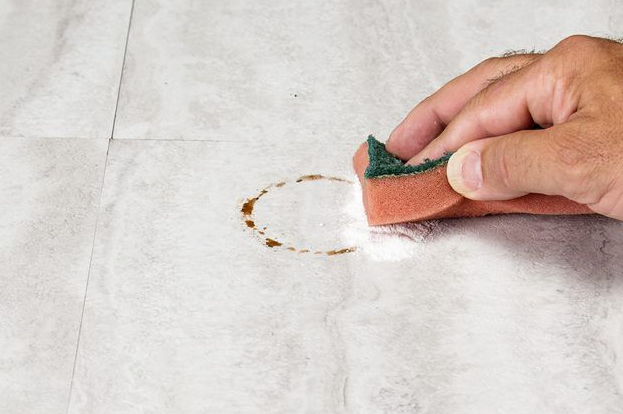The kilt is one of the most iconic and recognizable garments in the world. Instantly associated with Scotland, it is a symbol of Scottish identity, culture, and pride. From its origins in the Scottish Highlands to its modern-day use at weddings, festivals, and formal occasions, the kilt continues to be a beloved garment, blending historical significance with contemporary appeal.
The Early Origins of the Kilt
The kilt’s roots go back to the 16th century, when early versions of the garment, such as the feileadh mòr (great kilt), were worn by Scottish Highlanders. The great kilt was a large piece of woolen cloth, often in a tartan pattern, that could be wrapped around the body and draped over the shoulder. Its versatility made it both a practical garment for the harsh Scottish climate and a protective covering for outdoor life. The feileadh mòr was also worn as a blanket, allowing Highlanders to keep warm during cold nights or while on long journeys.
As time passed, the kilt evolved. By the 18th century, the design became more structured, resulting in the feileadh beag (small kilt), which eventually became the modern kilt. Unlike the earlier version, the small kilt had pleats sewn into the back, making it easier to wear and move in. By the early 19th century, the small kilt had become the more familiar version of the garment that we recognize today.
Tartan: The Heart of the Kilt
One of the most distinctive features of the kilt is its tartan pattern. Tartan consists of intersecting horizontal and vertical bands of color, traditionally made from wool. The origins of tartan patterns are tied closely to Scottish clans. Each clan had its own unique tartan, passed down through generations, symbolizing a connection to the land, family, and heritage.
The pattern was originally created using plant-based dyes and was woven by hand. Over time, the various tartan designs became associated with specific families or regions, and wearing a particular tartan became a way for individuals to show pride in their clan or ancestry. While tartan remains strongly connected to the kilt, modern variations have expanded the use of tartan beyond the traditional to include a variety of colors and patterns used in both formal and casual settings.
The Kilt in Scottish Culture
The kilt has long been an integral part of Scottish culture and identity. It was a symbol of unity and pride for the Highland clans, particularly in times of war or political struggle. Following the Jacobite rebellions of the early 18th century, the British government banned the wearing of the kilt as a means of suppressing Scottish culture. However, this led to a resurgence of Scottish nationalism, and the kilt became a symbol of resistance and cultural revival.
In the 19th century, during the Romantic period, Scottish culture saw a revival, and the wearing of the kilt was popularized by figures such as Sir Walter Scott, who helped elevate the kilt as an emblem of Scottish pride. This period marked the beginning of the kilt’s association with formal occasions, such as weddings, ceremonies, and Highland games. Kilts were not only worn by men of the Highlands but also embraced by Scots throughout the country, solidifying the kilt’s status as a symbol of Scottish heritage.
The Kilt Today: A Blend of Tradition and Fashion
While the kilt remains firmly rooted in tradition, it has also made its way into modern fashion. Today, kilts are commonly worn at formal events such as weddings, graduations, and cultural celebrations. In Scotland, kilts are often seen at festivals like the Highland Games, where athletes compete in traditional events such as caber tossing, tug-of-war, and the hammer throw. The kilt is also a common sight at Burns Night celebrations, which honor the life and work of Scotland’s national poet, Robert Burns.
In recent years, the kilt has also become a popular garment in contemporary fashion, with designers incorporating tartan into modern outfits. While traditional kilts are typically worn with a waistcoat, jacket, sporran (a small pouch worn at the front), and knee-high socks, contemporary variations of the kilt have appeared in streetwear, combining the garment’s historical roots with a more modern look. Today, kilts can be made from various materials like cotton, leather, and denim, and they often feature bold, creative patterns.
Kilts are no longer just for men, either. Women’s kilts have become increasingly popular, offering a more tailored and versatile look. Whether dressed up with a jacket or dressed down with a t-shirt, the kilt has proven to be a timeless garment that adapts to various occasions and styles.
How to Wear a Kilt
Wearing a kilt comes with certain expectations and etiquette, particularly for formal occasions. For men, a traditional kilt is typically paired with a matching jacket, a dress shirt, and accessories like a sporran and kilt pin. Knee-high socks or hose are also part of the traditional look, and shoes are generally black, leather, and polished.
A key point to remember when wearing a kilt is that it should be worn with the pleats at the back and the length just above the knee. The sporran, which serves both as a decorative accessory and a functional pouch, is placed at the front of the kilt to hold small personal items.
It is traditionally considered acceptable to wear a kilt without underwear, though this is a personal choice and not a requirement. In formal events, wearing the kilt with pride and respect for its heritage is what matters most.
The Kilt Around the World
While the kilt is most strongly associated with Scotland, it has spread around the world, especially in countries with significant Scottish populations, such as the United States, Canada, and Australia. Scottish emigrants brought their customs and traditions with them, and today, kilts are worn by people of Scottish descent for cultural events, such as parades, Highland games, and family reunions.
Kilts also appear in popular culture, often symbolizing strength, independence, and a deep connection to one’s heritage. Movies like Braveheart and TV shows like Outlander have helped bring the kilt into mainstream consciousness, portraying it as a symbol of rebellion, honor, and tradition.
Conclusion
The kilt is much more than just a garment—it is a symbol of Scotland’s rich cultural heritage and a reflection of the pride, strength, and unity of the Scottish people. From its humble beginnings in the Scottish Highlands to its place in modern fashion and global culture, the kilt remains an enduring icon of Scottish tradition. Whether worn on special occasions, in daily life, or as a fashion statement, the kilt continues to represent the spirit of Scotland and the timeless nature of its culture.









Leave a Reply